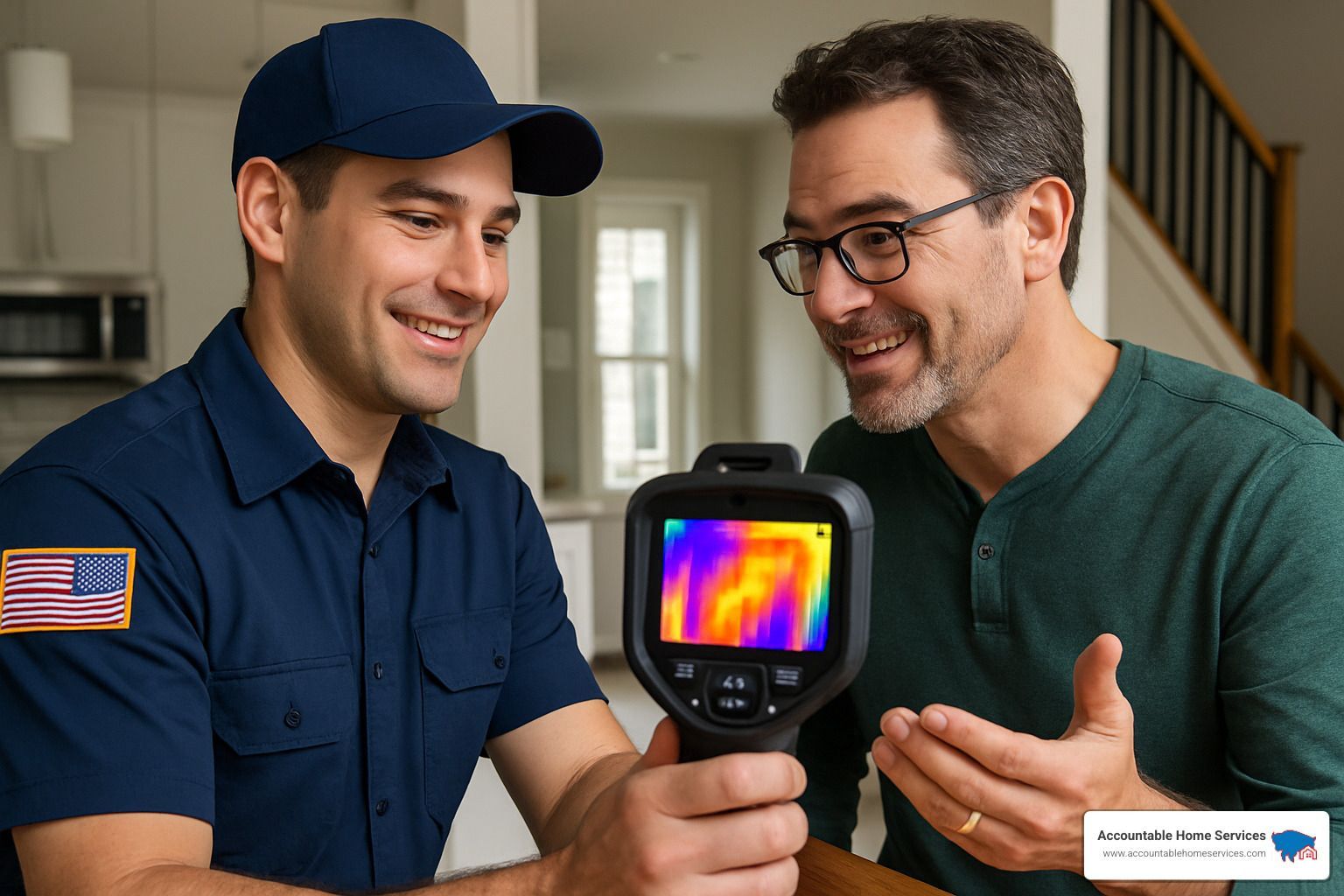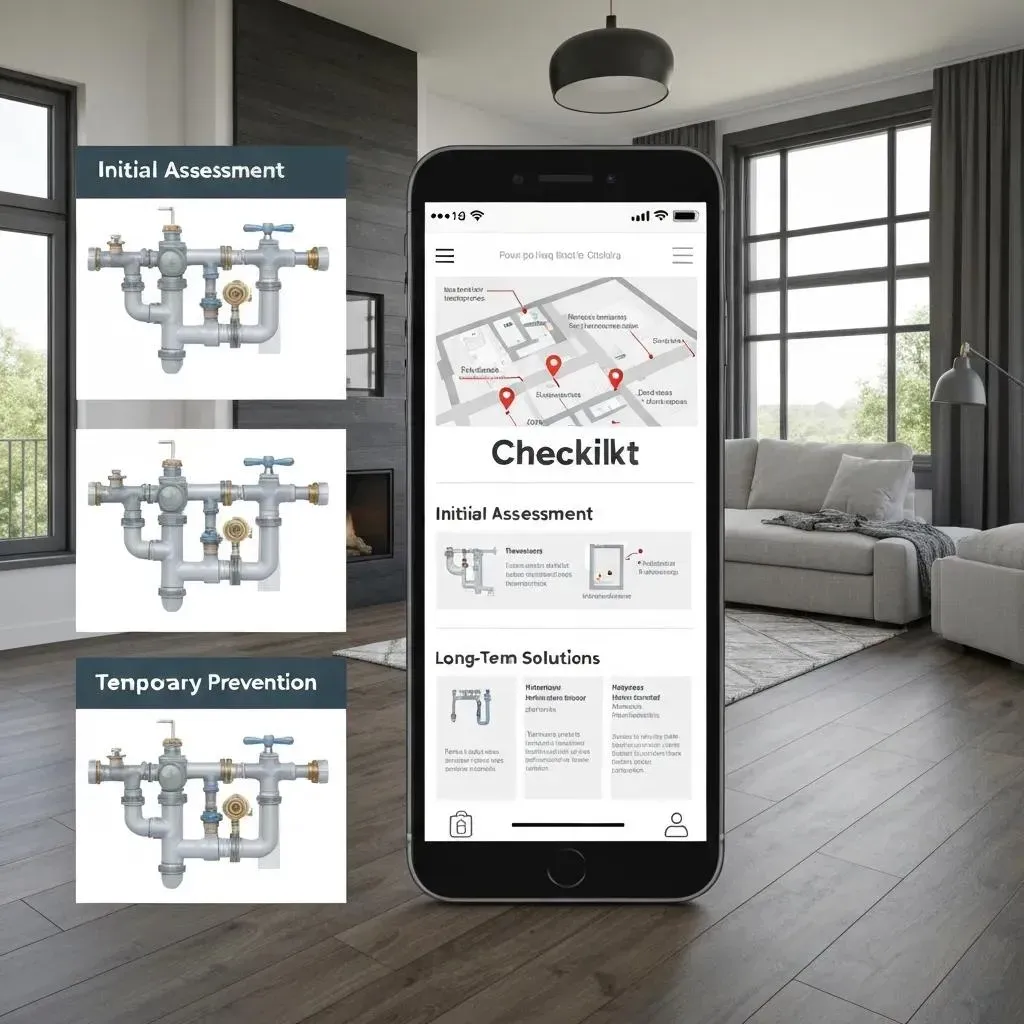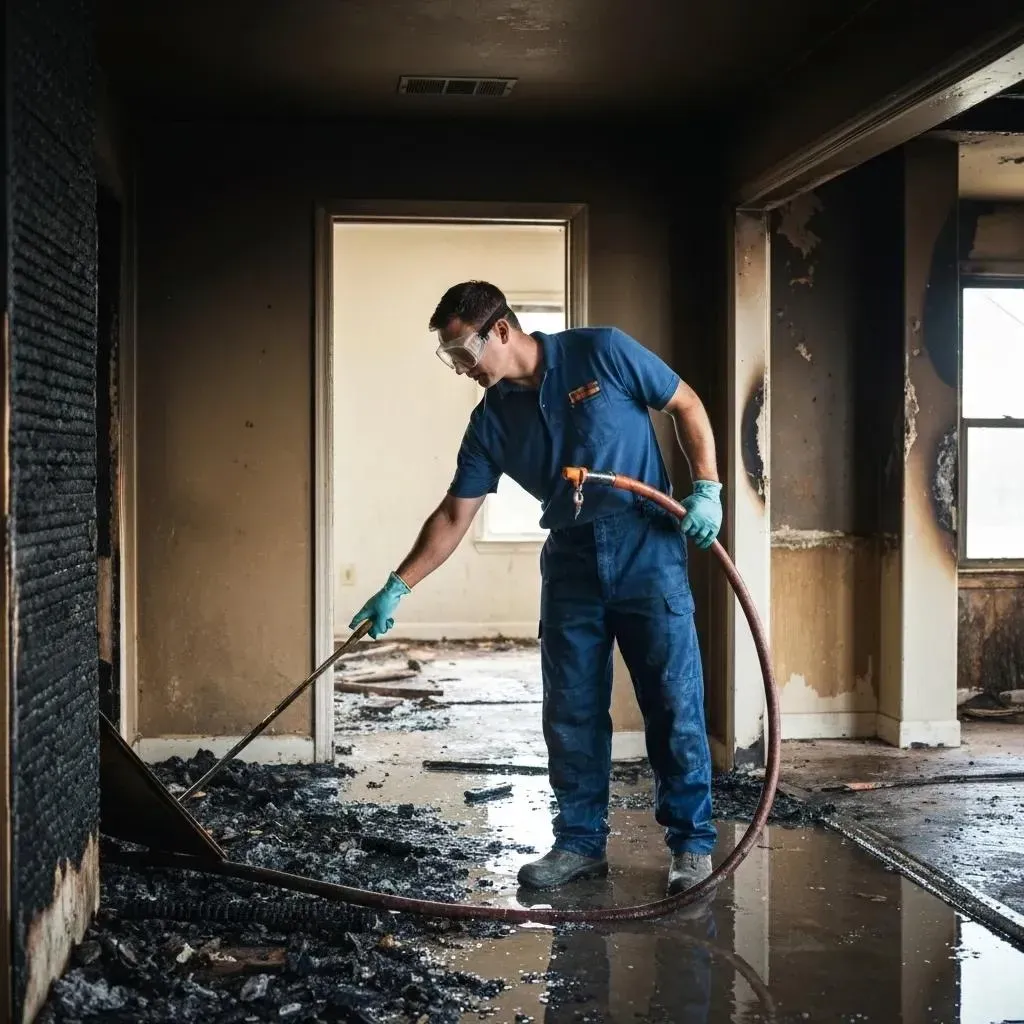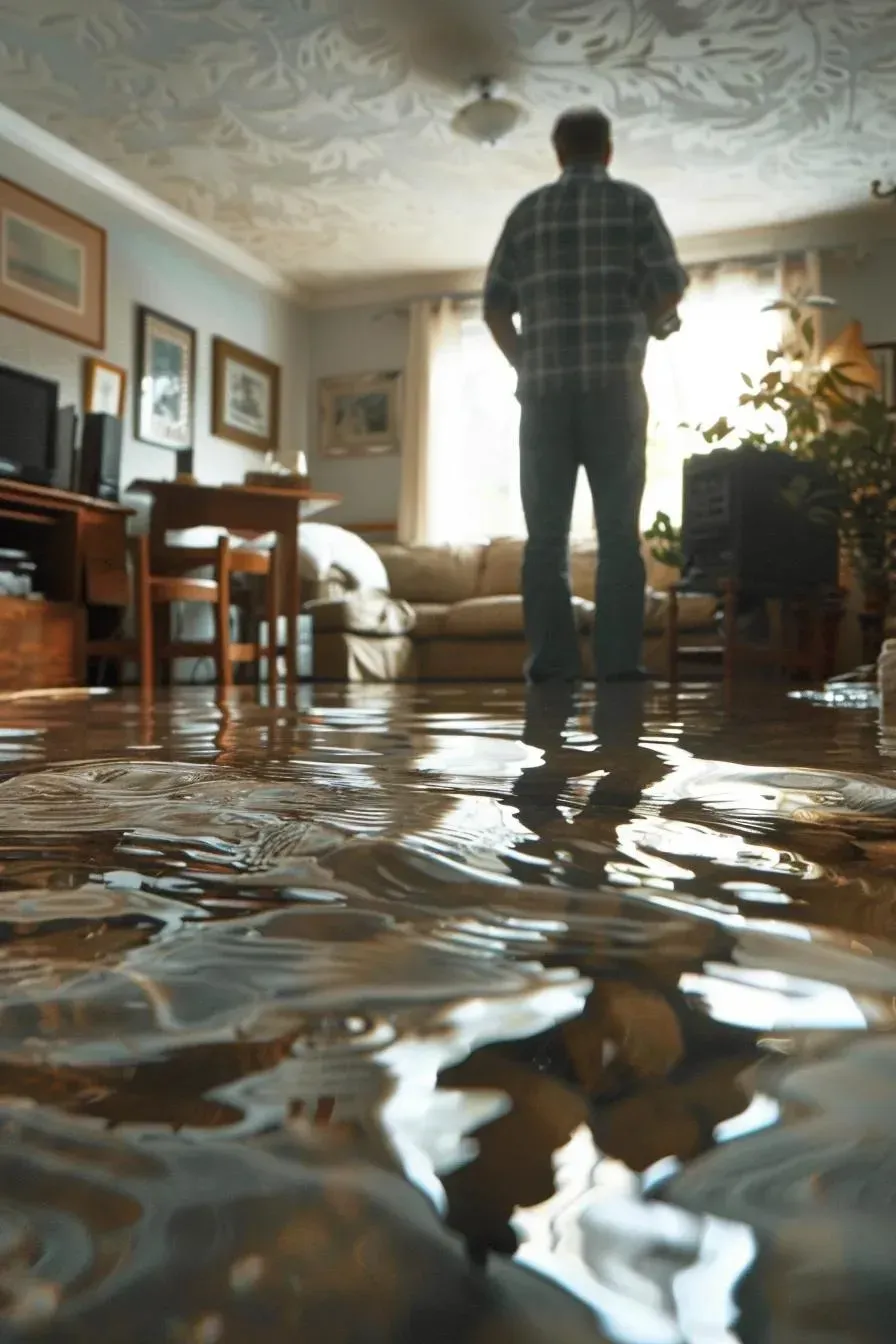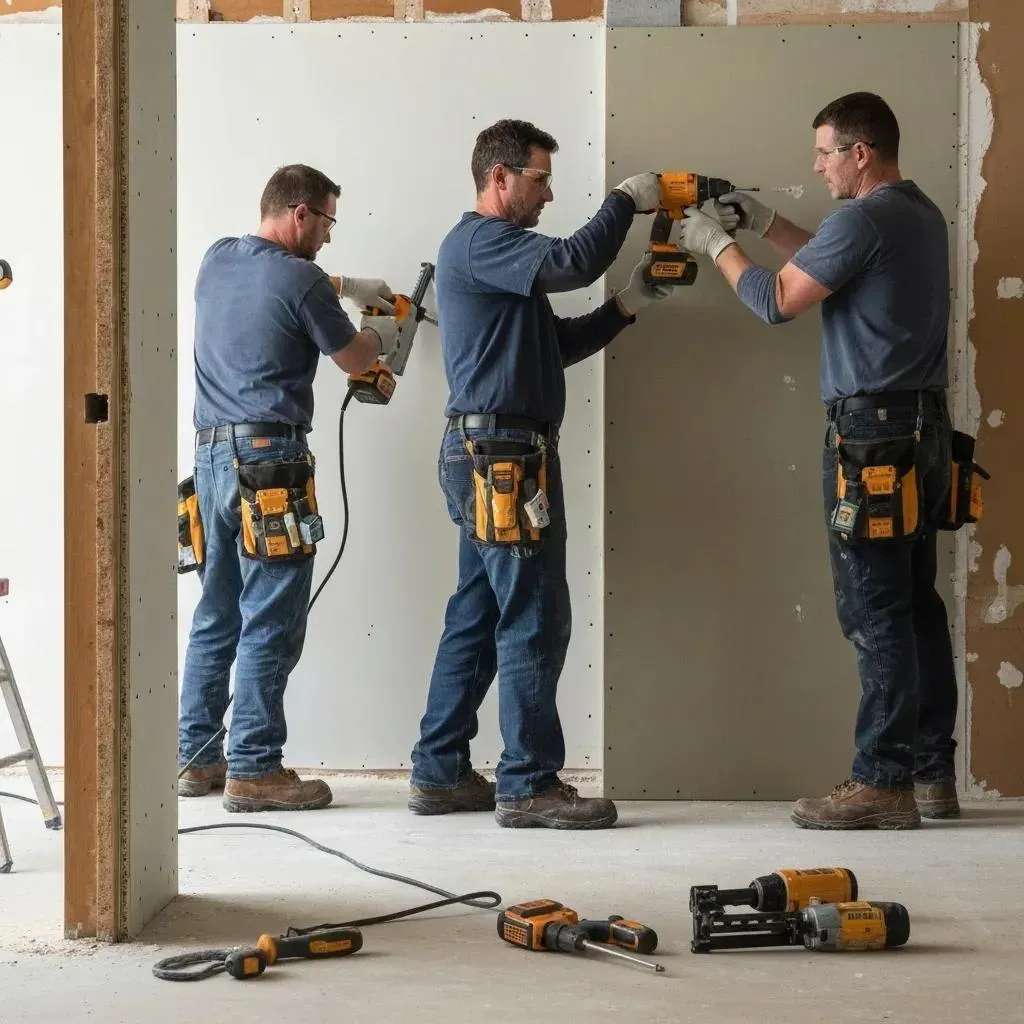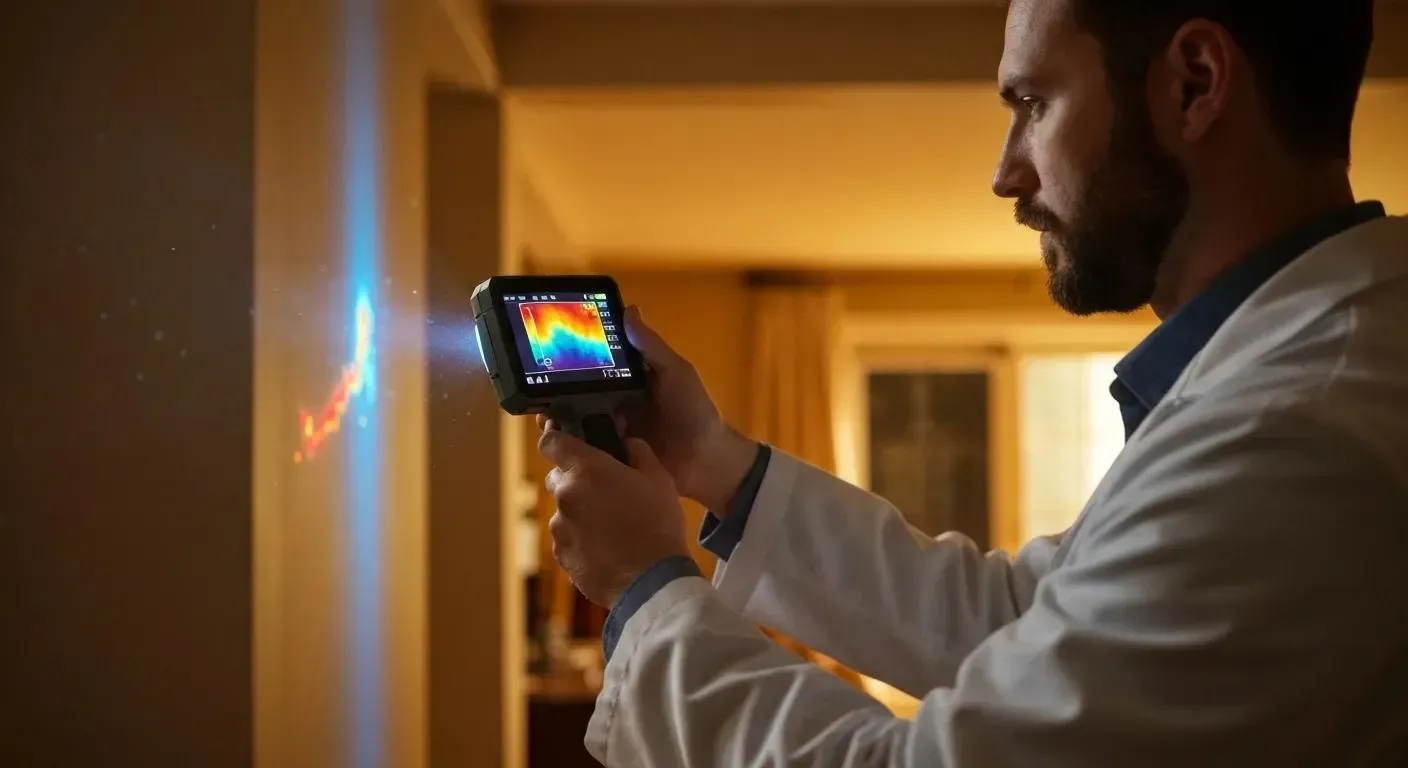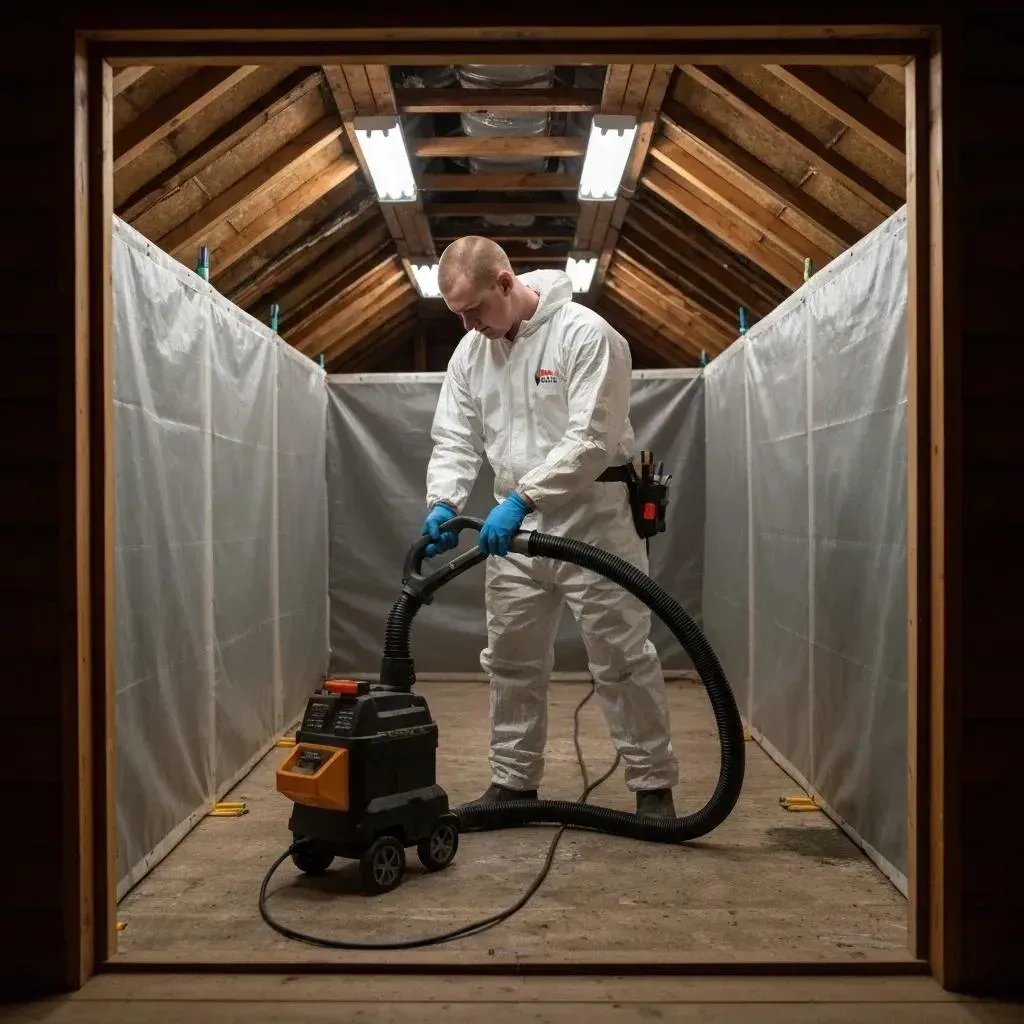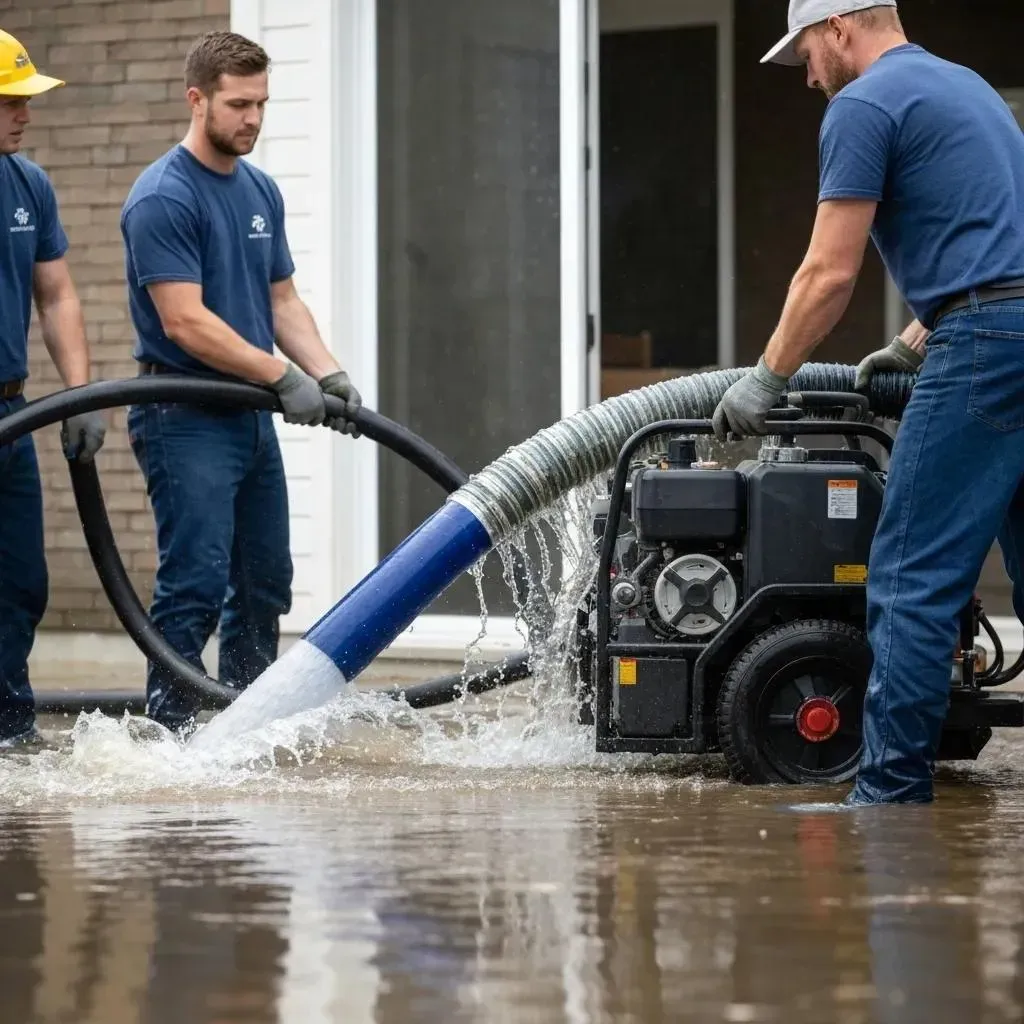Blog
Seeing What's Hidden: How Thermal Imaging Reveals Your Home's Energy Secrets
A thermal imaging energy audit is a non-invasive inspection that uses infrared cameras to detect temperature variations in your home, revealing hidden energy losses. This advanced diagnostic technique helps identify insulation gaps, air leaks, moisture issues, and HVAC inefficiencies that are invisible to the naked eye.
What is a thermal imaging energy audit?
- Uses infrared cameras to create visual heat maps of your home
- Detects temperature differences that indicate energy waste
- Identifies specific locations of heat loss and air infiltration
- Provides visual evidence for targeted repairs
- Works best with at least a 20°F temperature difference between inside and outside
From missing insulation to poorly sealed windows, a thermal imaging energy audit can uncover the hidden culprits behind those high energy bills and uncomfortable rooms. According to the U.S. Department of Energy, simply addressing the air leaks identified during an energy audit can reduce your heating and cooling costs by up to 10%. For homeowners in Denver's variable climate, where temperatures can swing dramatically between seasons, these inspections are particularly valuable.
Heat loss can account for up to 50% of your home's total energy consumption, with the main sources including air leakage through chimneys, attics, wall vents, and poorly sealed doorways. A professional thermal scan makes these invisible energy thieves visible, allowing for precise, targeted improvements.
I'm Mike Martinez, owner of Accountable Home Services, and I've personally conducted hundreds of thermal imaging energy audits throughout Denver's diverse neighborhoods, helping homeowners identify costly energy inefficiencies and develop practical solutions to improve comfort while reducing utility bills.
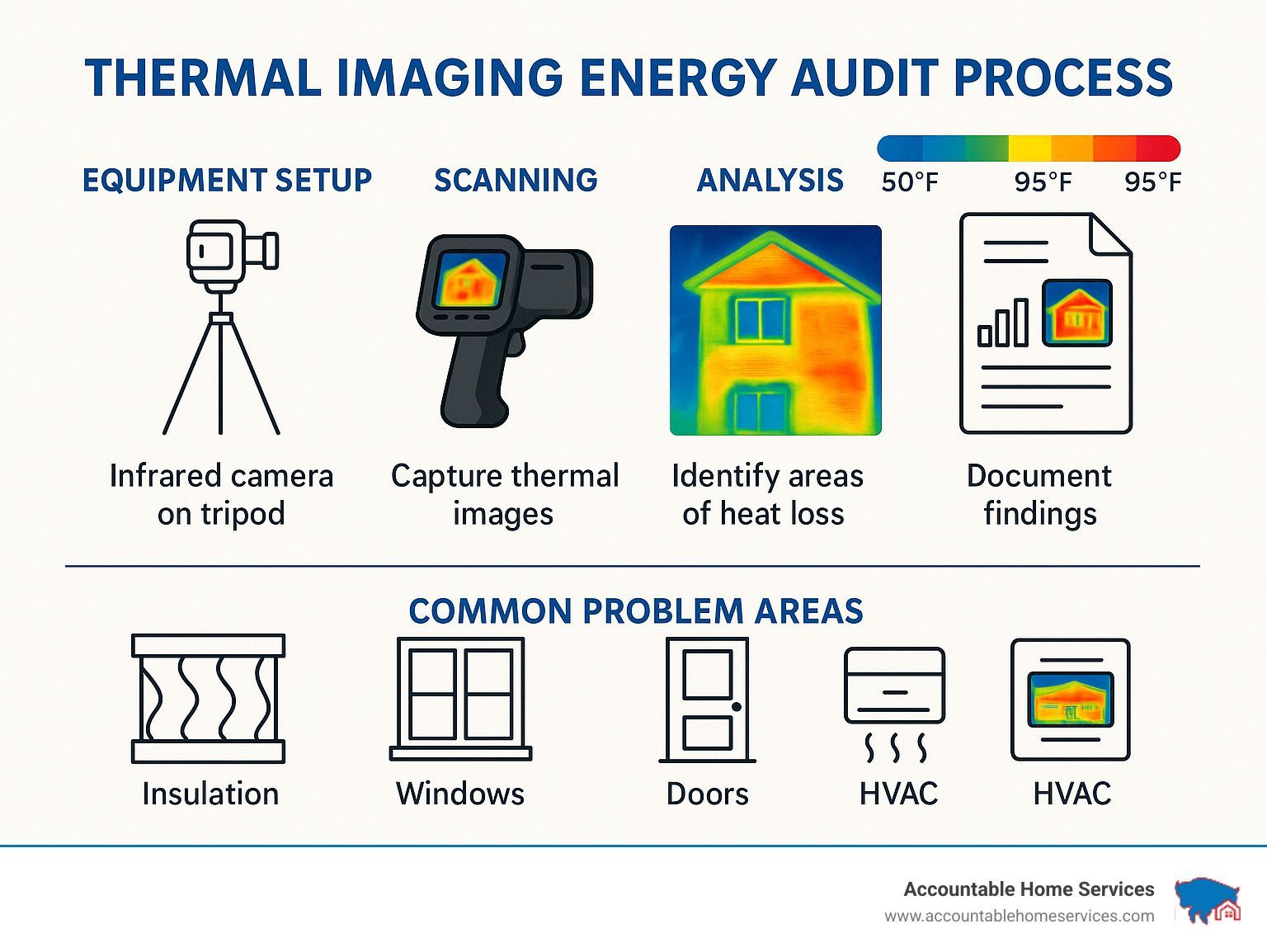
How Does Thermal Imaging Reveal Hidden Energy Loss?
Ever wonder how we can "see" the heat escaping from your home? A thermal imaging energy audit works by detecting the invisible infrared radiation every object gives off and translating it into a color image you can understand warm areas appear red, orange, or yellow while cooler zones show blue or purple.
A 206F (or greater) temperature difference between the inside and outside of your Denver-area home creates the contrast needed to expose problem spots. Our technicians also factor in emissivitydifferent building materials emit heat at different ratesto avoid false readings from shiny metal or glass.
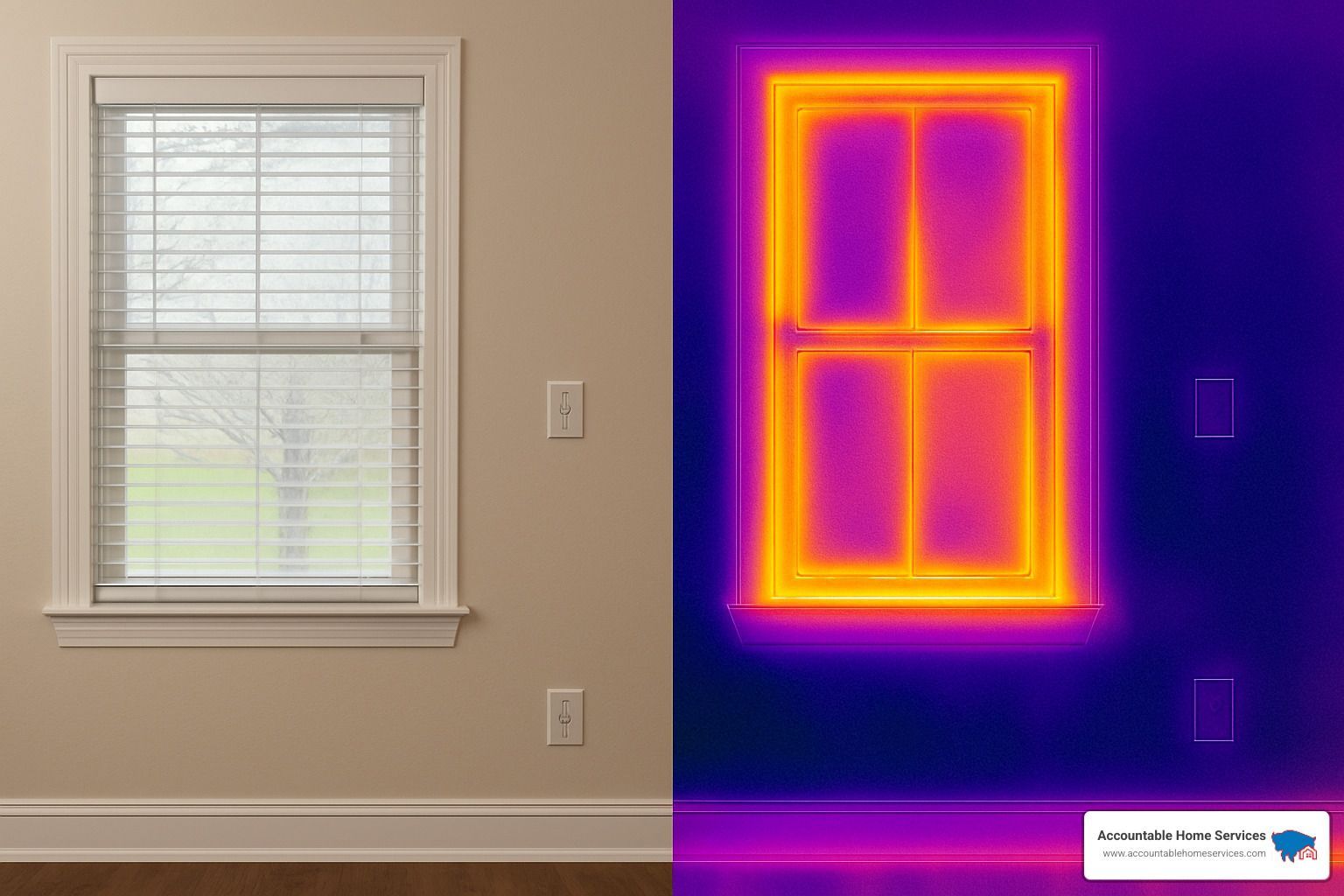
The Science Behind the Glow (Quick Version)
- Conductive heat loss: broad, uniform color shifts reveal inadequate insulation.
- Convective heat loss: streaky patterns flag air leaks around windows, doors, and framing.
- Thermal bridges: straight lines tracing studs or joists show where heat races through solid framing.
- Moisture issues: odd cool spots may indicate damp materials that hold heat differently.
Pairing the camera with a blower door exaggerates air movement, so drafts stand out like neon arrows. In just minutes, we can map insulation gaps, hidden leaks, and moisture concernsgiving you clear, data-backed targets for improvement.
Why a Thermal Imaging Energy Audit Outshines Traditional Checks
Old-school draft sticks and utility-bill guesswork can tell you that energy is being wasted, but not where or why. A thermal imaging energy audit delivers a full-house heat map in one visitno holes in walls, no guesswork.
Key benefits for Denver homeowners:
- Non-invasive and fast: see behind walls without demolition.
- Comprehensive: one scan shows every trouble spot at once.
- Visual proof: immediate images make problems (and fixes) crystal-clear.
- Savings: homeowners who address findings typically trim energy costs by ~20%.
Old Tools vs. High-Tech Diagnostics (Snapshot)
Tissue draft detector
Single draft location
Full leak network, insulation voids
Bill analysis
Rising costs
Specific problem areas
Visual inspection
Issues already visible
Hidden defects behind finishes
Thermal imaging
Source, size, & severity of losses
Virtually nothing when performed correctly
Colorado's freeze-thaw cycles make seasonal leaks common; thermal imaging is uniquely suited to spot those shifting gaps so they can be sealed before the next utility spike.
Step-by-Step Thermal Imaging Energy Audit Process
When Accountable Home Services arrives, expect a streamlined seven-step procedure that usually wraps up in under two hours for an average-size Denver home.
Pre-inspection chat – review your comfort concerns and recent energy bills.
Equipment setup – calibrate the infrared camera and record indoor/outdoor temps.
Blower door test (if ordered) – depressurize the house to amplify air infiltration.
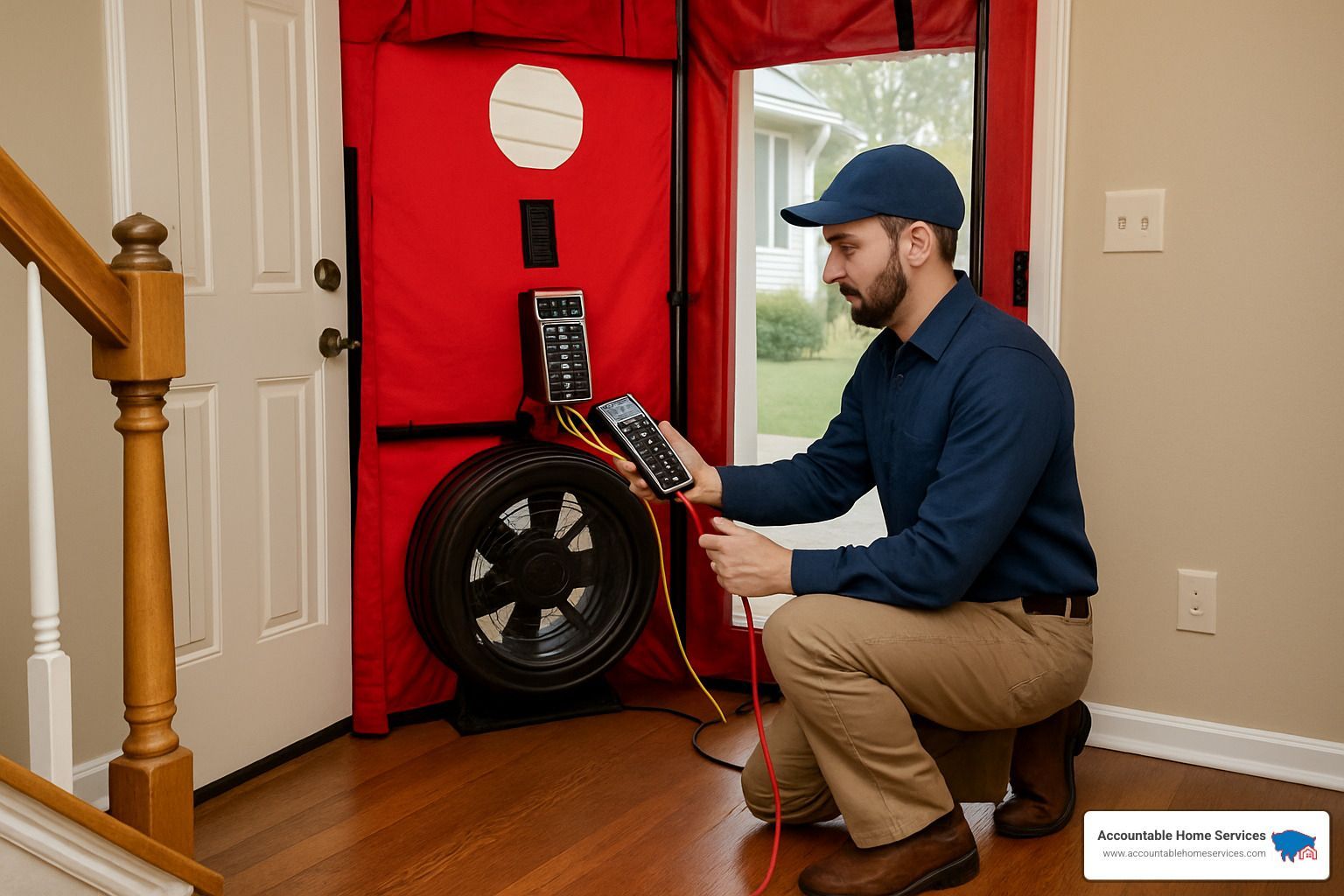
Interior scan – methodically sweep walls, ceilings, floors, plus outlets, lights, and ducts.
Exterior scan – (weather permitting) capture roof, siding, and foundations to confirm findings.
Data analysis – annotate images and rank issues by energy impact.
Results consultation – walk you through the report and recommend fixes—no pressure, just practical advice.
Quick Homeowner Prep
- Maintain a 206F indoor/outdoor temperature gap for several hours before we arrive.
- Pull furniture 2 ft from exterior walls and open blinds for clear views.
- Provide safe attic/basement access.
For more detail, see our full checklist: Thermal Imaging Inspections.
Choosing the Right Thermal Camera & Tools
Not all infrared cameras are created equal. At Accountable Home Services we use imagers with:
- ≥ 320×240 resolution for crisp detail
- ≤ 100 mK sensitivity to detect small 0.1 °C differences
- Wide temperature range (-4 °F to 752 °F) for Colorado extremes
- IP54 durability for dusty attics and surprise spring showers
DIY vs. Pro Gear in 30 Seconds
Resolution
80×60-160×120
320×240-640×480
Sensitivity
150-200 mK
≤100 mK
Cost
$200-$1,000
$3,000-$10,000
Learning curve
High
Handled by certified tech
A consumer tool is useful for curiosity checks, but professional equipment—and a trained eye—are essential for a reliable thermal imaging energy audit that pays for itself in energy savings.
Reading the Colors: Turning Audit Findings into Savings
A finished thermogram is more than a colorful picture—it’s a to-do list that can cut 15–30 % off annual heating and cooling costs when acted on.
What the Colors Mean—Fast Guide
- Red/Yellow/White – heat escaping (winter) or entering (summer).
- Blue/Purple/Black – cold infiltration or missing insulation.
- Odd cool blobs – possible moisture holding heat differently.
- Straight cool lines – thermal bridges through studs/joists.
Typical Priority List
- Air-seal leaks (caulk, weather-strip, spray foam).
- Boost attic insulation to at least R-49.
- Address wall/garage ceiling gaps.
- Tune HVAC and seal ducts.
- Upgrade windows & doors if still cost-effective.
Rebates from Xcel Energy can offset up to 30 % of these upgrades, and a follow-up scan verifies every fix. See more: Home Energy Efficiency Upgrades.
Frequently Asked Questions about Infrared Home Diagnostics
How often should I schedule an audit?
A professional thermal imaging energy audit every 3–5 years keeps your home performing its best. Schedule sooner after major renovations, unexplained bill spikes, or extreme weather events.
Can I rely on a library-loaned camera?
Great for learning, but limited resolution and sensitivity mean subtle (and costly) problems often go unnoticed. Use a loaner for spot-checks—then book a pro audit for full confidence.
What about rain, wind, or bright sun?
Wet surfaces, winds above ~15 mph, or direct sun create misleading readings. We aim for calm, dry conditions—usually early morning in winter—to guarantee accurate results.
Conclusion
The power of a thermal imaging energy audit is something I've seen transform homes across Denver. It's like giving homeowners a superpower – suddenly being able to see what's been invisible all along. Those cold spots that have been making your living room uncomfortable for years? That mysterious draft you can't quite pinpoint? The thermal camera reveals these secrets in vivid color.
But this isn't just about pretty rainbow-colored images of your house. The real magic happens when you translate those findings into tangible improvements that make your home more comfortable and efficient.
When you address the issues uncovered during your audit, you'll experience benefits that go far beyond just a lower utility bill:
Improved comfort becomes immediately noticeable – those rooms that were always too cold in winter or too hot in summer finally feel just right. No more wearing extra sweaters in your own living room!
Better home durability comes from identifying and fixing moisture issues before they can cause serious structural damage. In Colorado's climate, catching these problems early can save you thousands in repairs down the road.
A healthier indoor environment develops when you control air and moisture movement, reducing the risk of mold and improving overall air quality. Your home should be your sanctuary, not something making you sneeze.
A smaller carbon footprint is the natural result of lower energy consumption. Every bit of insulation you add or leak you seal helps reduce your environmental impact – something many Denver homeowners value deeply.
Increased home value is the cherry on top. Energy-efficient homes command higher resale prices in Denver's competitive market, making your improvements a smart investment for the future.
At Accountable Home Services, we've guided hundreds of homeowners throughout Broomfield, Westminster, Thornton, and greater Denver toward these transformative improvements. Our approach combines high-tech imaging with down-to-earth, practical solutions custom to Colorado's unique climate challenges.
The journey to a more efficient, comfortable home starts with understanding exactly where your energy dollars are literally slipping through the cracks. A professional thermal imaging energy audit provides that critical foundation, empowering you to make smart decisions about improvements that will give you the biggest bang for your buck.
Ready to see what's hiding in your walls? Contact us today to schedule your thermal imaging inspection and take the first step toward the comfortable, efficient home you deserve.
